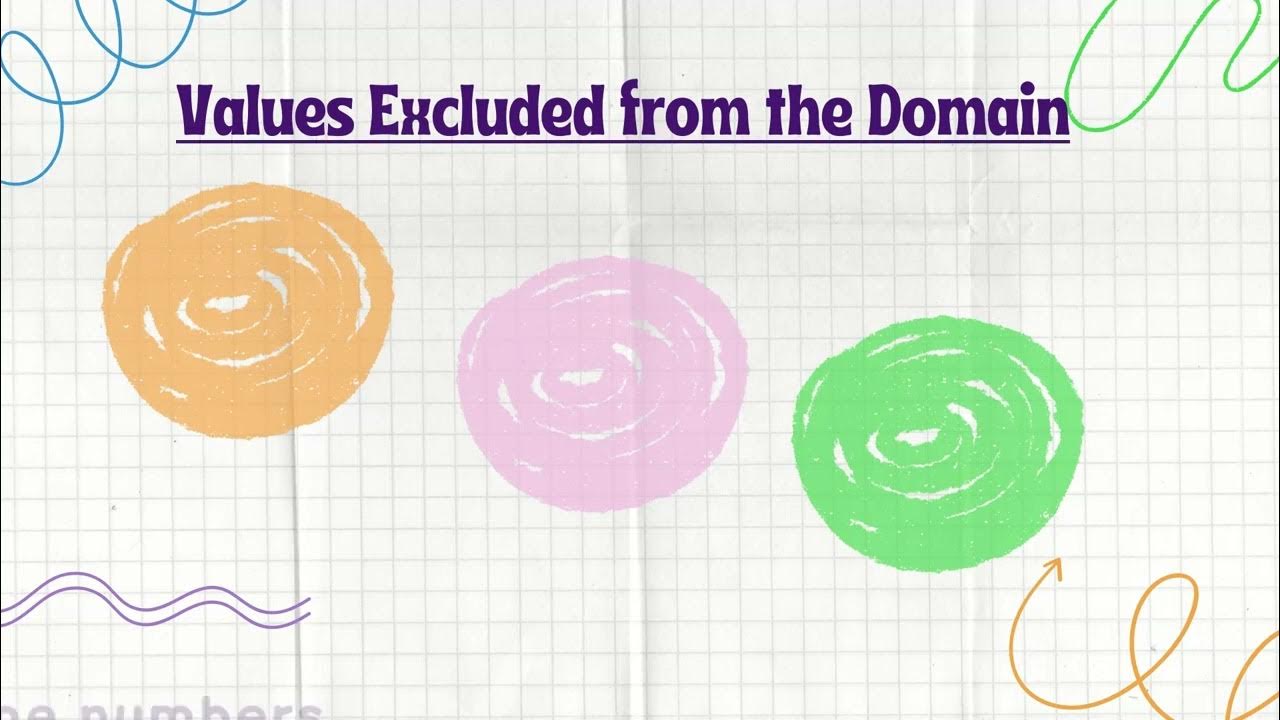Functions - Vertical Line Test, Ordered Pairs, Tables, Domain and Range
Summary
TLDRThis video script offers an insightful exploration of functions and the vertical line test. It clarifies that a function is a unique relationship where each x-value corresponds to a single y-value, using tables to illustrate. The script guides viewers in identifying functions from non-functions through examples, emphasizing the importance of no repeated x-values. It also explains how to determine the domain and range of a function from ordered pairs and introduces the vertical line test for graph analysis. The video concludes by promoting an algebra course on Udemy, covering a wide range of topics from basic arithmetic to complex numbers and sequences.
Takeaways
- 📌 A function is a special relationship where each x-value corresponds to exactly one y-value.
- 🔍 To determine if a relation is a function, use the vertical line test: a vertical line should intersect the graph at most once.
- 📊 The domain of a function includes all the x-values of a set of ordered pairs.
- 📈 The range of a function includes all the y-values of a set of ordered pairs, which should be listed in ascending order.
- 🚫 A relation is not a function if there are repeated x-values with different y-values.
- 👍 A relation can be a function even if there are repeated y-values corresponding to different x-values.
- 📐 In a table, a relation is a function if no x-values are repeated, ensuring one-to-one correspondence with y-values.
- ✏️ When given a set of ordered pairs, check for repeated x-values to determine if the relation is a function.
- 📉 For graphs, if a vertical line touches the curve at only one point, the graph represents a function.
- 🔄 A complete circle does not represent a function because it fails the vertical line test by touching a vertical line at multiple points.
- 📚 The script also promotes an algebra course on Udemy, covering various topics from basic arithmetic to complex numbers and sequences.
Q & A
What is the definition of a function in the context of mathematics?
-A function is a special relationship between X and Y values where each X value corresponds to exactly one Y value. In other words, a function does not allow an X value to have two different Y values.
How can you determine if a relation is a function by looking at a table?
-You can determine if a relation is a function by checking if there are any duplicate X values with different corresponding Y values. If there are, it's not a function; if not, it is a function.
What is the vertical line test, and how does it help in determining if a graph represents a function?
-The vertical line test is a method used to determine if a graph represents a function. If a vertical line intersects the graph at more than one point, the graph does not represent a function. If it intersects at only one point, it does represent a function.
How do you identify the domain of a function given a set of ordered pairs?
-The domain of a function is the set of all possible X values. Given a set of ordered pairs, the domain is simply the list of unique X values from those pairs.
What is the range of a function, and how can you determine it from a set of ordered pairs?
-The range of a function is the set of all possible Y values. To determine the range from a set of ordered pairs, list all the unique Y values and arrange them in ascending order.
What is the difference between a linear graph and a circle in terms of being a function?
-A linear graph represents a function because it passes the vertical line test, touching any vertical line at only one point. A complete circle, however, does not represent a function because it touches a vertical line at two points.
Can a function have multiple Y values corresponding to different X values?
-Yes, a function can have multiple Y values corresponding to different X values. The key is that the same X value cannot correspond to two different Y values.
What is the purpose of the algebra course mentioned in the script, and where can it be found?
-The algebra course mentioned in the script is designed to help students improve their understanding of various algebraic concepts, including functions, vertical line tests, and more. It can be found on Udemy by searching for 'algebra' and selecting the course with a black background image.
How are video quizzes used in the algebra course to enhance learning?
-Video quizzes in the algebra course are used to test and reinforce learning. They are multiple-choice and allow students to pause, work on the problems, and see the solutions, providing an interactive way to review and understand the material.
What are some of the topics covered in the algebra course mentioned in the script?
-The algebra course covers a wide range of topics including basic arithmetic, fractions, linear equations, order of operations, graphing linear equations, inequalities, polynomials, factoring, systems of equations, quadratic equations, rational and radical expressions, complex and imaginary numbers, exponential functions, logarithms, functions, conic sections, and sequences and series.
Outlines

This section is available to paid users only. Please upgrade to access this part.
Upgrade NowMindmap

This section is available to paid users only. Please upgrade to access this part.
Upgrade NowKeywords

This section is available to paid users only. Please upgrade to access this part.
Upgrade NowHighlights

This section is available to paid users only. Please upgrade to access this part.
Upgrade NowTranscripts

This section is available to paid users only. Please upgrade to access this part.
Upgrade NowBrowse More Related Video
5.0 / 5 (0 votes)





